Brokering Brexit: A year in search of a deal
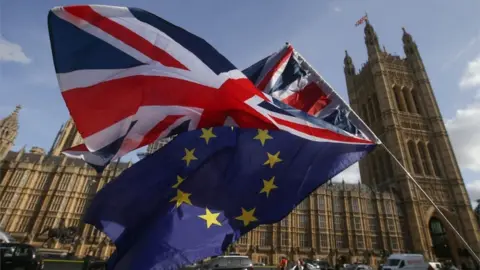 Getty Images
Getty ImagesIn 2019, the British and Irish governments and the DUP each made a shift in their Brexit positions.
For the governments it delivered a deal - but for the DUP it ended in disaster.
The year began with the UK government, led by Theresa May, suffering a thumping parliamentary defeat.
MPs rejected her Brexit deal by more than 200 votes.
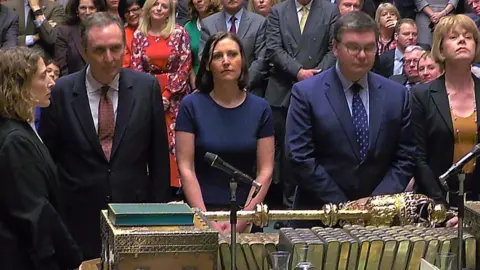 House of Commons
House of CommonsIt shattered her authority but she clung on until June, attempting to tweak her deal and bringing it back for two further unsuccessful "meaningful votes".
For many MPs the problem at the heart of her deal was the Northern Ireland backstop.
It was an attempt to tackle the fact that Brexit had the potential to upend the delicate status quo on the Irish border.
The backstop was a position of last resort to maintain the existing soft border.
Essentially, it meant that, if no other solution could be found, the whole of the UK would stay in a customs union with the EU, and Northern Ireland would stay in large parts of the EU's single market.
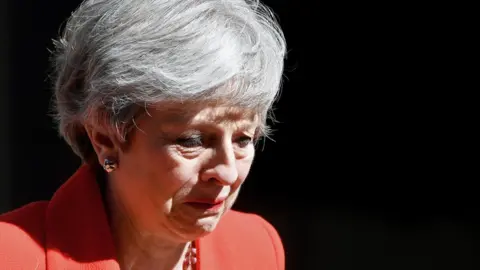 Reuters
ReutersFor many Conservatives the backstop was a trap that could lock the UK into a customs union, killing the ambition of a truly independent "global Britain".
The prime minister's partners in the DUP also opposed the backstop as it had the potential to weaken the union between Northern Ireland and Great Britain.
So, as Mrs May was pushed aside, all the frontrunners to replace her as Conservative leader were adamant that the backstop had to go.
Boris Johnson took the hardest line: he had at one stage likened the backstop to a constitutional suicide vest.
His opening move as prime minister in August was to write a tough letter to the EU demanding the "unviable" and "anti-democratic" backstop be scrapped.
 Getty Images
Getty ImagesThe tactic seemed to be two-pronged: either spook the EU into a last minute capitulation ahead of the October deadline, or leave without a deal and blame Brussels intransigence.
However, Mr Johnson would face similar constraints as his predecessor: a united EU which was not going to shaft Ireland and a parliament that was unwilling to do his bidding.
When MPs passed the so-called Benn Act in early September it effectively removed no deal as an option. With that threat gone, there was renewed focus on the shape of a potential new deal.
Throughout September ideas were floated. Mr Johnson began talking about an all-Ireland food standards zone, the Times reported that the DUP would drop its objection to regulatory checks at Irish Sea ports.
In early October, the prime minister revealed his plan - Northern Ireland would continue to follow EU rules on agriculture, food safety and industrial goods - the rest of the UK would not.
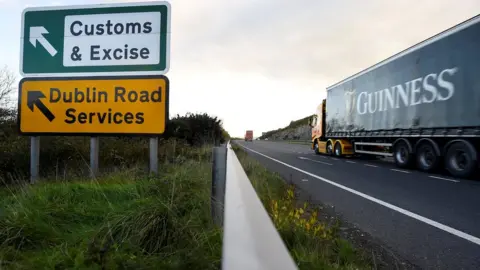 Reuters
ReutersThe Northern Ireland Executive and Assembly would have to approve those arrangements coming into force and reapprove them every four years.
The DUP welcomed the plan - it was a big move for them to accept new regulatory borders, but they believed the role for Stormont gave them a veto over the arrangements.
Mr Johnson also proposed that the whole of the UK should leave the EU's customs union.
This would inevitably mean a new customs border between Northern Ireland and the Republic of Ireland with new requirements for cross-border traders.
The prime minister suggested the impact of this could be minimised, with any checks taking place away from the border.
This plan was never going to fly with the EU.
The customs idea risked a harder border and the up-front veto for the DUP could prevent the all-Ireland regulatory zone from ever materialising.
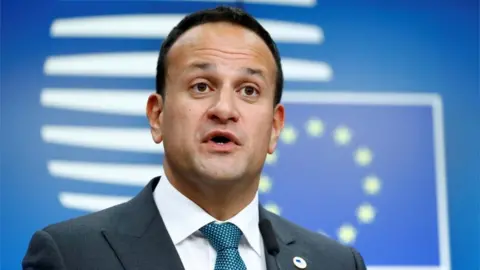 Reuters
ReutersBut Dublin struck a conciliatory tone with Taoiseach Leo Varadkar speaking about the need to "tease through" the issues.
A week later, Boris Johnson and Mr Varadkar met at Thornton Manor on Merseyside. This would prove to be the engagement which unlocked a deal.
The fruits of the Thornton Hall meeting ripened in Brussels on 17 October.
A new agreement was unveiled which allowed Mr Johnson to say the backstop was gone. But only because many of its provisions were incorporated into a new policy.
Northern Ireland would continue to follow EU rules on agricultural and manufactured goods. The rest of the UK would not.
The whole of the UK would leave the customs union but Northern Ireland would continue to enforce the EU's customs code. That means customs processes on goods entering Northern Ireland from Great Britain.
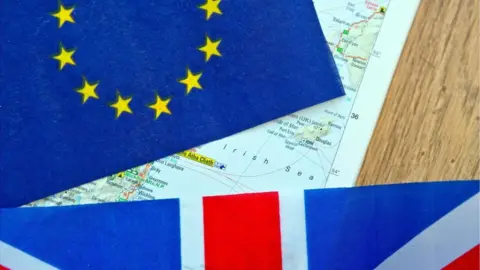 Getty Images
Getty ImagesThe Stormont assembly would have a say on continuing these arrangements but by a simple majority, not the unionist veto the DUP thought they had been promised.
This differential treatment for Northern Ireland was a big move by Mr Johnson.
In March 2018, his predecessor had said that no UK prime minister could ever agree to a deal that would "threaten the constitutional integrity of the UK by creating a customs and regulatory border down the Irish Sea."
To unionists an Irish Sea border was exactly what he had agreed to.
A former advisor to Theresa May suggested that the DUP decision in September to accept there could be divergence between Northern Ireland and Great Britain gave Mr Johnson "leeway" in his negotiations with the EU.
Raoul Ruparel told a House of Commons committee that one of the reasons Mr Johnson got a deal was due to the DUP's move.
But he added, "that maybe wasn't the right choice" for the DUP.
The deal also represented a move by the EU. They had insisted that the backstop was an "all-weather guarantee" to no hardening of the border.
But the role for Stormont weakened that guarantee.
Speaking the day after the deal, Leo Varadkar acknowledged there was an "outside chance" that the Northern Ireland Assembly could effectively choose a hard border at some time in the latter half of the next decade.
He was confident such a risk was small, adding: "If there's a risk we're taking, the risk we're taking is one on democracy."
For the DUP it was an exercise in democracy which brought their influence on the Brexit process to an end.
A decisive majority for Boris Johnson in the UK general election means he no longer needs DUP votes and will deliver Brexit by 31 January.
